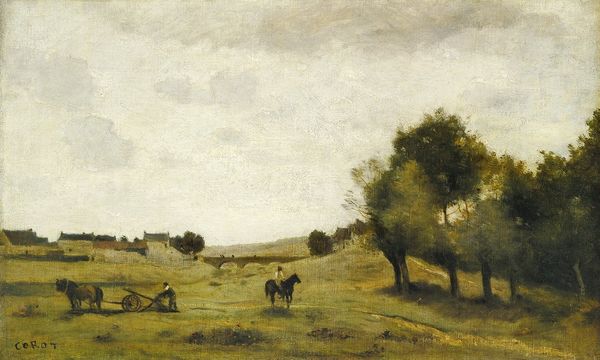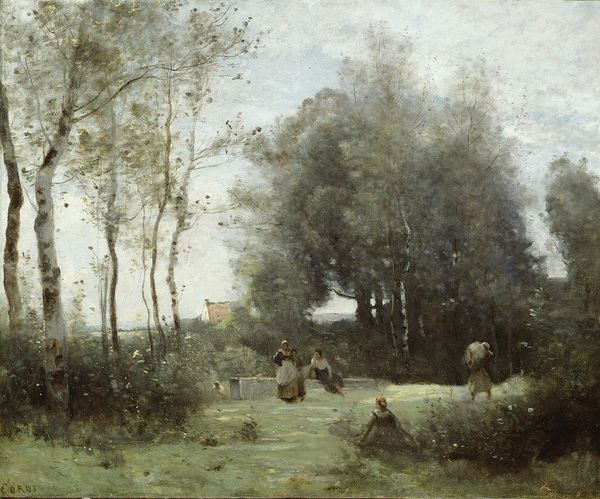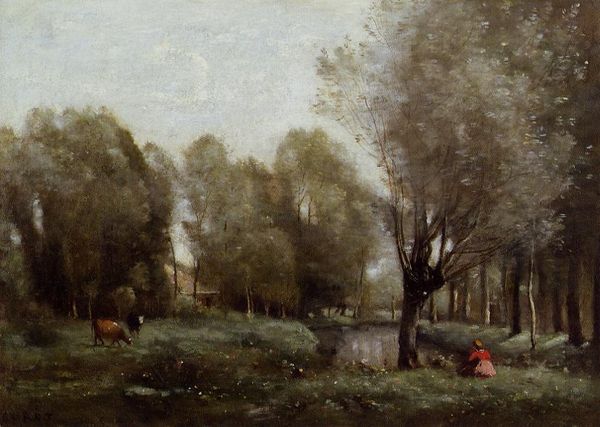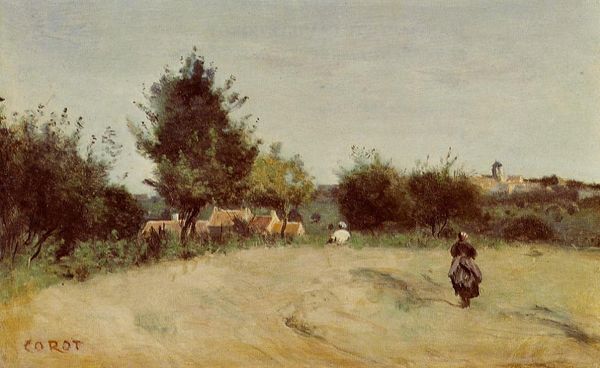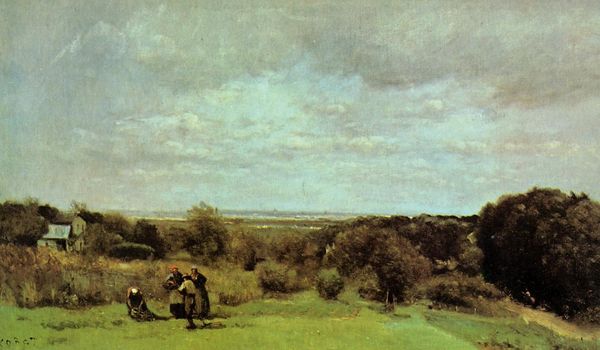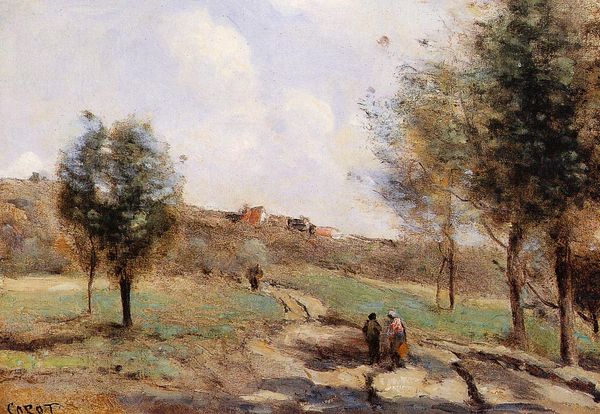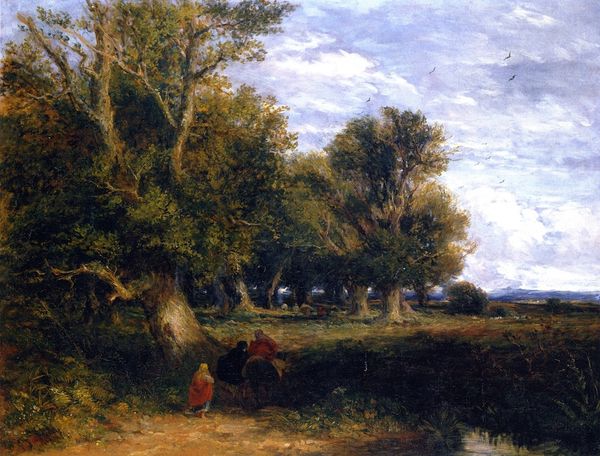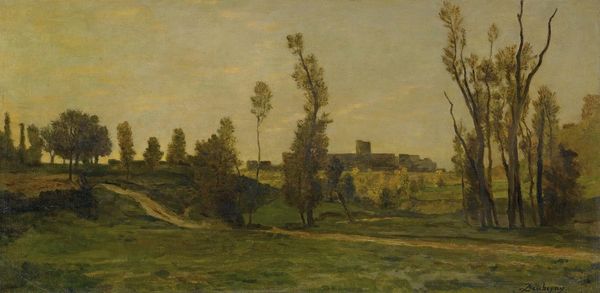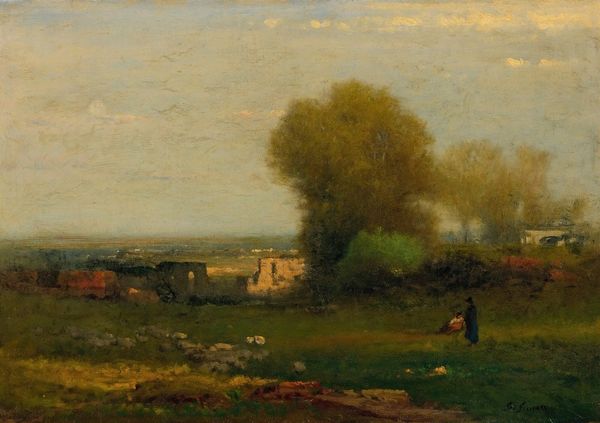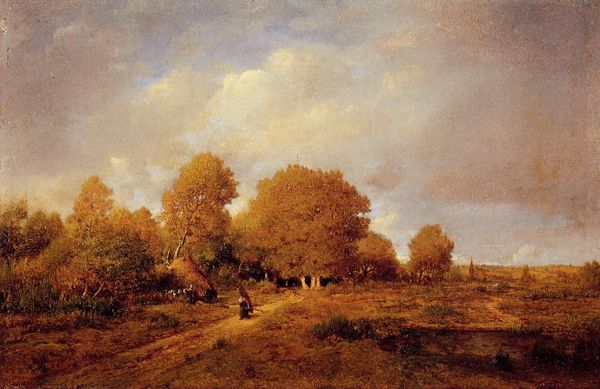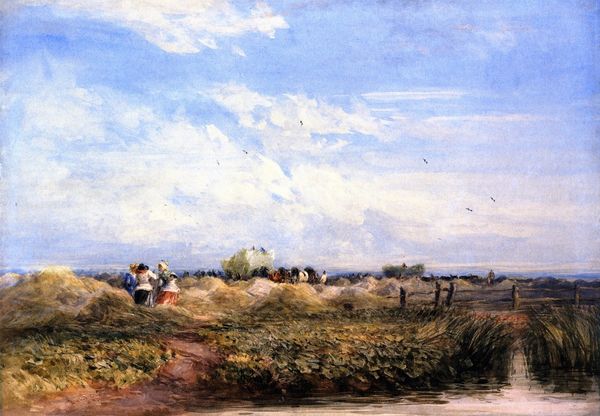
The Evaux Mill at Chiery, near Chateau Thierry 1860
0:00
0:00
jeanbaptistecamillecorot
Private Collection
plein-air, oil-paint
#
impressionism
#
plein-air
#
oil-paint
#
landscape
#
impressionist landscape
#
oil painting
#
watercolor
Copyright: Public domain
Curator: This is Camille Corot's "The Evaux Mill at Chiery, near Chateau Thierry," an oil on canvas landscape painted around 1860. What strikes you most when you first see it? Editor: There's a stillness to it, almost melancholic. The palette is subdued, and the composition seems to center on quiet, rural life. I feel a sense of longing for simpler times. Curator: Corot was deeply invested in capturing the feeling of a place, focusing on how light interacts with form. The figure in the foreground, for example. Editor: She adds a layer of narrative. Who is she? Where is she going? What is her role in this pastoral setting? She appears rather insignificant in relation to the landscape but the focal point is certainly around her, giving the idea that this specific spot contains meaning in a way. I can relate that figure with some of the modern working women that used to spend long hours doing rural field labor, in really unhealthy environments. Curator: The figure serves, on another level, as an archetype or perhaps, more universally, a human being going through their everyday routine as nature and light constantly witness all stages of our existence. Notice how her dress relates tonally to the colors in the landscape itself. Corot masterfully unites the figure and surroundings. Editor: He creates harmony, certainly. But also, maybe, perpetuates an accepted hierarchy in which the labor and struggle are quietly erased from the image. The work offers no detail in this subject which, to my sensibility, doesn't reflect any truth. Is there some symbolic messaging to communicate between rural landscape with workers living from its resources? What do the location itself brings as meaning? Curator: The Evaux Mill at Chiery becomes less about documentary accuracy and more a conduit for reflection, or about a world, increasingly vanished under industrial development that may symbolize. For example, you pointed out how insignificant that individual is on canvas. This adds a message of being unnoticed as other bigger interests come on top of what really should matter. Editor: I guess it could reflect on contemporary anxieties in a historical moment, the 1860's, right on track of early labor movement manifestations across France and other nations worldwide. But I insist that perhaps this idyllic framing obscures underlying inequalities of labor, which were certainly already present by 1860. It makes us wonder about Corot's intentions... Curator: Perhaps Corot wants the image itself to work on multiple levels simultaneously: a serene, beautiful world that yet exists alongside and holds within it elements of profound tension. He makes me think how we want our rural communities and traditions to continue resisting erasure from our society. Editor: Definitely gives a lot to think about from several points of view!
Comments
No comments
Be the first to comment and join the conversation on the ultimate creative platform.
